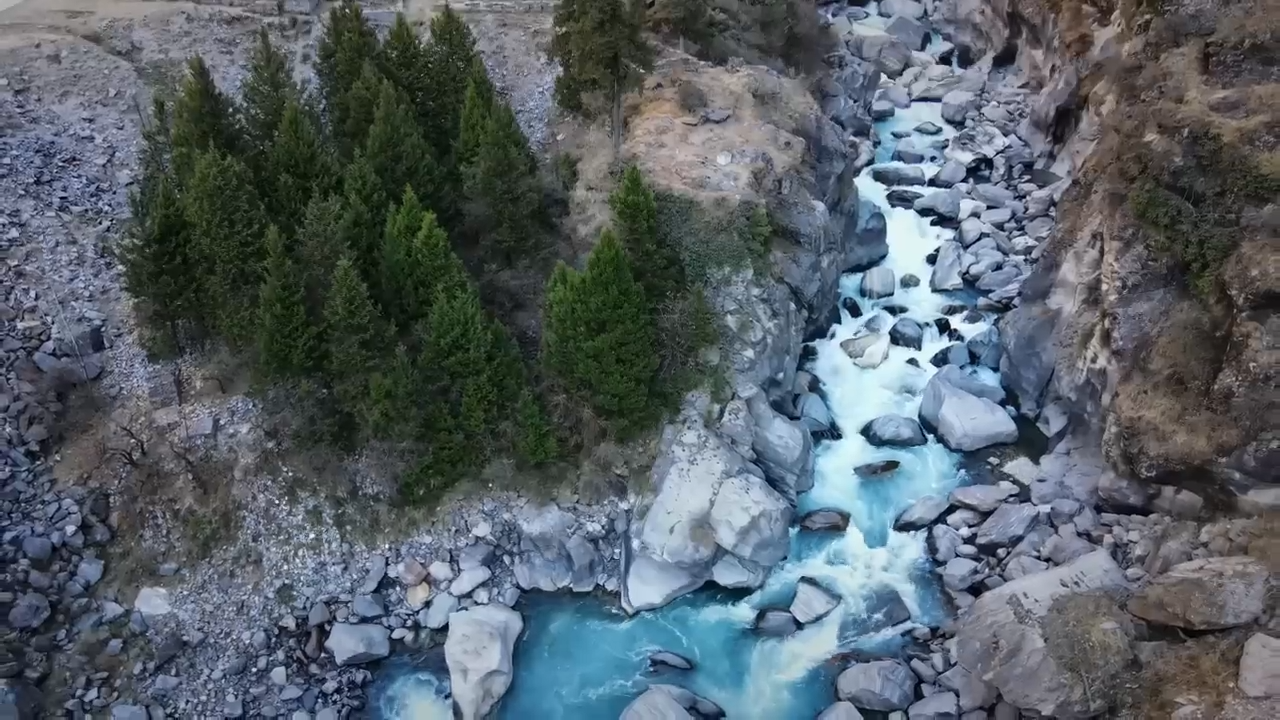In our second journey, we continue to explore the origins of the Ganga by uncovering the fascinating journey of the Bhagirathi River, which serves as the primary source stream for this revered river. The narrative of the Bhagirathi commences with a story of unwavering dedication and resolve – that of King Bhagirath, whose profound meditative efforts resulted in bringing down the celestial Ganga to Earth.
Devotion that Summoned a River
Legend has it that King Sagara performed the illustrious Ashwamedha sacrifice to assert his sovereignty over the Earth. His 60,000 sons, in pursuit of the ceremonial horse, confronted Sage Kapila, wrongfully accusing him of theft, which led to their ultimate incineration by the sage’s curse. It was the descendant of these sons, King Bhagirath, whose arduous penance prompted Ganga’s descent to earth to provide salvation for his ancestors’ souls.

Ganga’s force was so potent that Lord Shiva had to capture her in his matted locks to temper the flow, eventually releasing Ganga in a gentler stream – one that we now know as the Bhagirathi.
The Path of Bhagirathi
The Bhagirathi’s course commences from the celestial heights of the Himalayas, traversing downwards to join with other tributaries and continue its journey. Its odyssey is not just a physical traverse but a confluence of geography and history that has shaped the very land through which it flows.
In previous Blog, we discussed the coming together of the Alaknanda and Bhagirathi rivers, where the poignant sight of the Shivling peak stands resolute, a sentinel to this natural pilgrimage.
Gomukh: The Conventional Source

At a short distance stands Gomukh, the traditional source of the Bhagirathi and thus the Ganga. Gomukh, resembling a cow’s mouth, is a cave from where the river emerges, today sitting some 4,000 meters above sea level. However, it’s poignant to note that the Gangotri Glacier, which feeds this origin, has been retreating rapidly due to climate change, drawing back a significant half kilometer over recent decades alone.
The Divine Gangotri
The Gangotri region is not just geographically significant but also spiritually, as it is home to the revered Gangotri Temple, one of the four Chota Char Dham pilgrimage sites.
This temple was initially constructed by Gorkha General Amar Singh Thapa at the very place where King Bhagirath is said to have meditated. The structure we now visit was later built by Jaipur’s Maharaja Sawai Madho Singh at the start of the 20th century, showcasing the architectural elegance distinct from other temples in the region.

As the Bhagirathi meanders further, it encounters confluences and diversions, including where it meets its sister tributary, the Alaknanda. The journey ahead is marked by steep gorges and lofty bridges, like the Lakshman Jhula and the ancient Lanka Bridge, which stands replaced by a sturdier, new structure.
Uttarkashi: The Heart of Administration
The town of Uttarkashi serves as the administrative hub for the region. In essence, Uttarkashi is akin to Kashi (Varanasi) with its own Vishwanath temple and central Ganga river. It echoes the same spiritual gravitas but within the heart of the Himalayas.
Here, the Maneri Dam, along with its affiliated power stations, performs a critical role in harnessing the river’s energy. The Bhagirathi’s waters are directed through tunnels and turbines in a complicated dance of modern hydropower technology.
The Tehri Dam: A Modern Marvel
The Tehri Dam – a subject of both admiration and controversy – creates one of the highest reservoirs in India. It’s an engineering titan that also bore the tragic consequence of submerging the original town of Tehri, displacing thousands.

The dam’s sheer capacity for hydropower generation is an impressive testament to human ingenuity and the river’s boundless energy.
The Journey Continues
As we trail the Bhagirathi further, it engulfs tributaries like Bal Ganga and Bhilangna, eventually leading to Tehri where it transforms significantly, not only in volume but also in its essence, as it heads towards Rishikesh and eventually meets the plains.
The Confluence with Alaknanda
The pilgrim’s odyssey culminates at Devprayag, where Bhagirathi and Alaknanda unify, endowing the name Ganga to the combined stream, which then flows onwards, towards the vast northern plains of India.

The Bhagirathi’s journey, spanning over 250 kilometers, is a tapestry woven with threads of mythology, spirituality, and the stark realities of climate change and environmental challenges.
As we conclude this part of our series on the Origins of Ganga, stay tuned for more narratives that map through this divine descent, carving not just the land but the very soul of India. Until next time, may the Bhagirathi’s enduring story flow through your thoughts, unstopped and ever inspiring.
